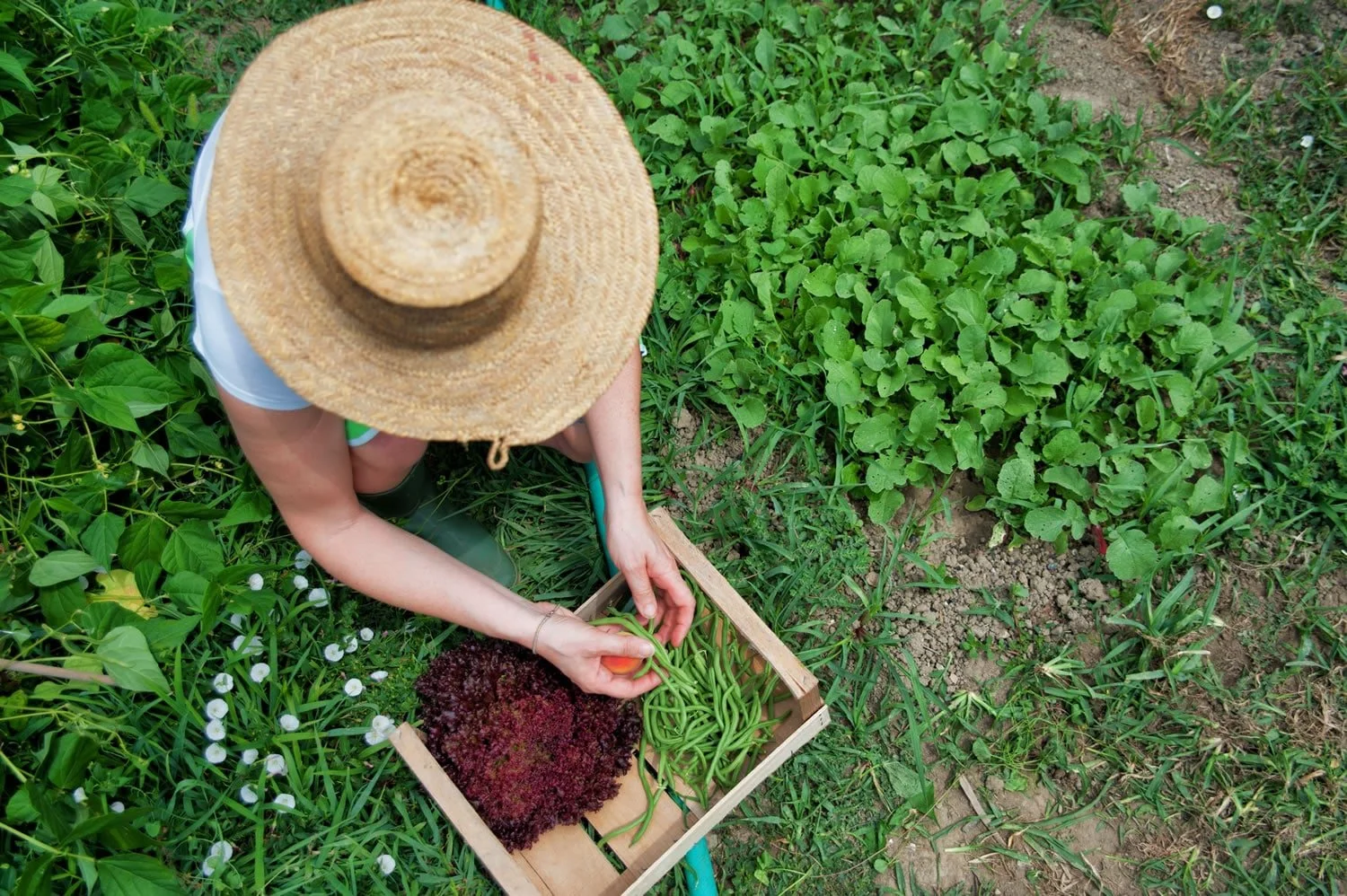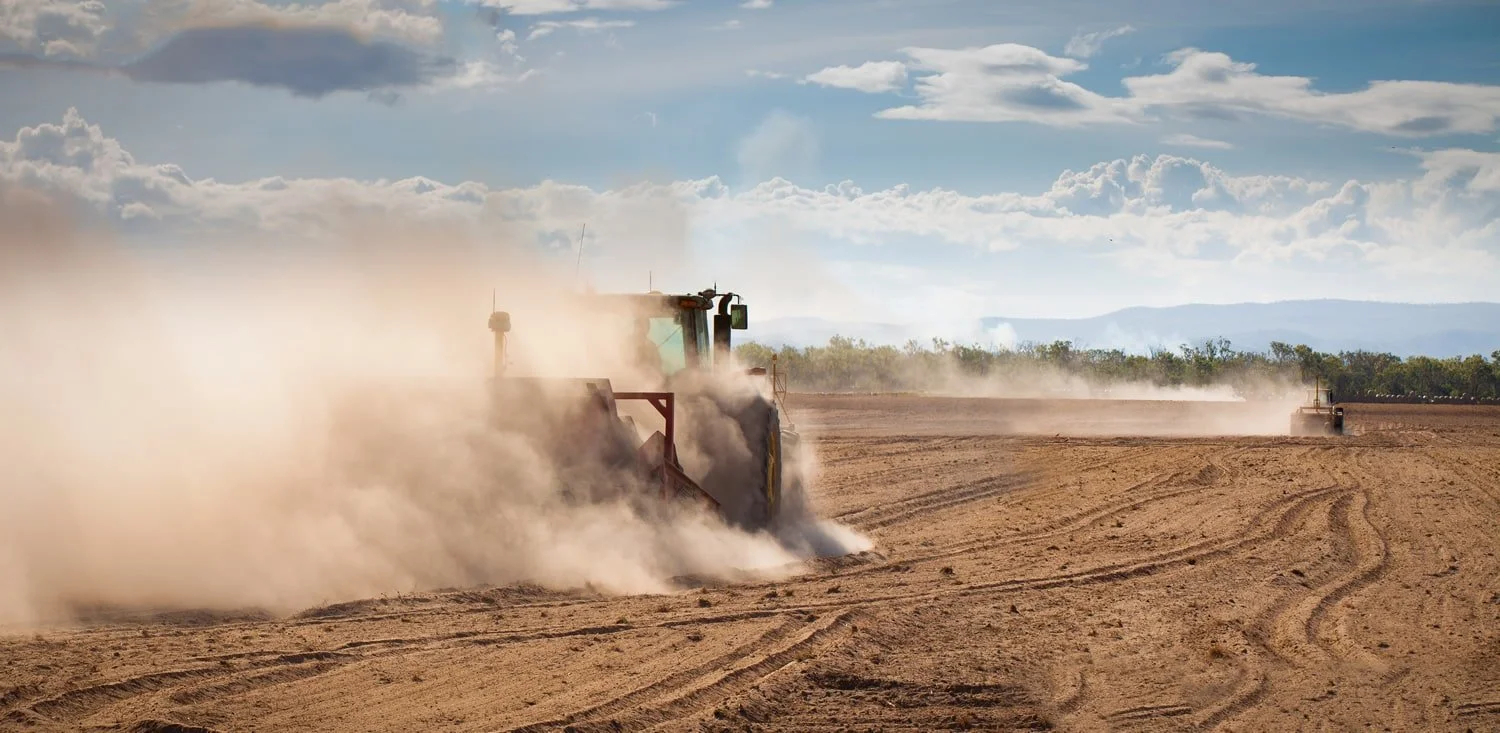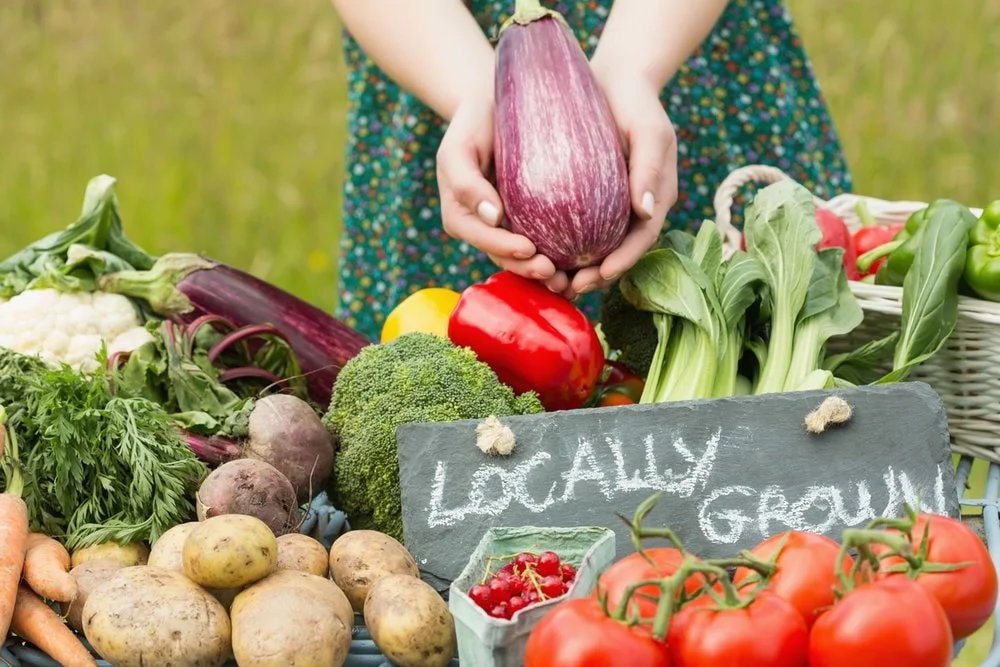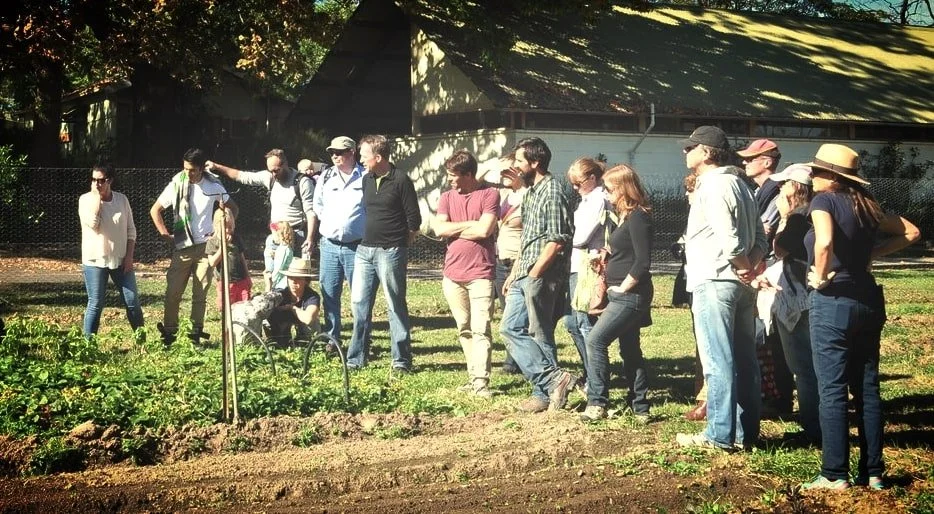Permaculture offers practical solutions to some of the world’s biggest problems including:
Destruction of natural environments
Changing climate and weather patterns
Damage and depletion of farmland and soil n Pollution of rivers, lakes, oceans, land and the air
Loss of many wonderful and useful species of plants and animals
Many people still poor and starving and uncertain about where their next meal is coming from
Permaculture offers a positive way to create healthy environments for your family, friends and neighbours by working with nature rather than against it. It can bring food production back to where we live and its gardening and farming techniques improve soil quality and depth over time ensuring an ongoing supply. Permaculture also looks at the way we design our homes and the places we live to create happier, healthier sustainable communities.
What is Permaculture?
More than Just a Way of Gardening! The term ‘Permaculture’ comes from a synthesis of the words permanent and agriculture. One popular and satisfying way that many people first get started is by growing their own food; whether it’s in a garden, on a balcony or in a community garden. It’s a fantastic way to interact with the environment and really get a hands-on feel for how nature works. Even if you’re not yet into gardening the ideas behind Permaculture can be applied by anyone interested in sustainability and creating a better society.
Permaculture was created by the bringing together of knowledge from many different areas such as agriculture, architecture, and renewable energy. Whether you work with people, plants, designing, building, planning or teaching, have a look at the permaculture principles - many can be applied to any job you do.
“The health of soil, plant, animal and humankind is one and indivisible.”
Why Get Involved?
1. Sustainability
Eating something you grow yourself, as well as being incredibly satisfying and healthy, is actually helping the world more than you might imagine. Many non-organic farming practices are seriously damaging the environment with the overuse of pesticides and fertilisers, damaging our soils, and polluting our water with toxic run off. Agricultural soil is being lost to erosion and depleted of fertility. It’s going to get harder and more expensive to produce the food we need and there is going to be a lot more of us to feed!
If you look at how most of our food gets to us you’ll see there is an enormous amount of energy wasted. Much of what we eat is grown hundreds of kilometres away (often more), it is packaged and transported many times. Permaculture encourages growing food closer to where we live and doing it productively so less natural habitats need to be destroyed.
2. Food security and safety
Wouldn’t it be great to know exactly where your food comes from? Has it been sprayed with toxic chemicals? Is it still fresh and full of vitamins? With home grown food not only could you answer these questions, it tastes better too!
If food supplies become scarcer and more expensive will you know how to grow your own? Will your kids? In Australia our soils are particularly fragile and how we use them will greatly impact our food production.
3. Community engagement and fun
Building or just being a part of your local community is a key part of Permaculture which in turn provides a dynamic support and advice network for sharing of skills knowledge, experiences and technology.
Members of the Permaculture Northern Beaches group regularly organise garden tours, permabees (working bees or specific projects), public information talks and special events. There are more and more community gardens operating or forming on the Northern Beaches. These gardens have an allotment of area for you to grow your own food in a larger garden and share knowledge and experiences with other community garden members.
Do I need a lot of space?
You can grow your own food even in small spaces such as an apartment with a window box, a balcony or a small backyard by using the space productively and intelligently. Every element (e.g. plant, animal or structure) in a Permaculture system is chosen and located in such a way that it has as many uses as possible - it is multi-functional. Each element also provides benefits to each other. It’s like you’re cultivating your own beneficial ecosystem!
Permaculture design uses a zone system from zero to five for planning the use of space. Zone zero incorporates your home and move up in number as you get further from the house. The principle behind the zones is to put elements you access more frequently closer by, saving time and effort. For example it is good to have a vegetable garden in zone one which is closest to the house. Things that require less frequent maintenance get put further away. Even if you do not have a garden, you’re living in zone zero and you can still engage permaculture principles by saving water and energy, harnessing natural resources such as sunlight, and generally creating a harmonious, sustainable environment in which to live and work.
Permaculture Principles
Permaculture brings together knowledge from traditional sustainable farming practices, observations of natural systems, science, and technology. Permaculture won’t tell you exactly what to put in your garden but it provides a way of designing a productive system by focusing on the relationships between the plants, animals, buildings and you! Permaculture is guided by a set of 12 principles which will be briefly introduced here.
1. Observe and Interact
“Beauty is in the eye of the beholder”
Take the time to watch the natural environment where you live - really get to know your location. For example, how much sun, rain or wind do different parts of your garden/space get? What are the effects of the season on your garden? A garden diary can help you observe such effects. Interact, watch and plan, try new things and don’t be afraid of failure. A beautiful garden is something to be proud of. Using natural patterns in design creates beauty and function. You can grow flowering plants with your vegetables which are beneficial for pollinating insects, and incorporate garden features.
2. Catch and store energy
“Make hay while the sun shines”
Develop systems for storing elements such as heat, water and produce. A rain water tank is great if you can have one, re-use water, look at your drainage and assess your topography. If you have a surplus of fruit or berries or produce make jams, sauces, gifts, or preserves. Another resource to be aware of is your own personal time and energy. A part of designing the layout of your garden in Permaculture is to make things as energy efficient as possible and when you do work focus on tasks that will create the most benefits.
3. Obtain a yield
“You can’t work on an empty stomach”
Make sure you harvest and reap rewards as you go too. It may seem obvious but make sure you plant things you like to eat at the times of year they are likely to thrive the best! Try and use something from your garden every day as this will give you incentives. Harvest at the right time and plan ahead. Try planting vegetables that can be continuously picked like climbing spinach or cos lettuce, that way you can harvest leaves early and over a longer period of time which save energy on replanting.
4. Apply self-regulation and accept feedback
“Think seven generations ahead”
In nature ecosystems look after themselves and stay in balance through a process of feedback and self-regulation. If you read the signs from nature correctly you can make this principle work for you. Sometimes the feedback will be negative, but this doesn’t mean give up! If a plant gets damaged by aphids, maybe try growing it at a different time of year, improve the soil, or keep an eye on your population of ladybirds which like to eat aphids. “Good bugs” which eat the “bad bugs” will often form a healthy balance, if you give them the chance. Use those observational skills! A map of your garden can help you in this also. Only plant what you can maintain and always maintain what you build.
5. Use and value renewable resources and services
“Let nature take its course”
There are many ways to do things without using petrol and fossil fuels that are quieter, less polluting, and more satisfying. Permaculture gardens usually do not depend on machines. Try using a rake rather than the leaf blower and make sure you think of those autumn leaves as a valuable mulch or compost. You can grow your own building materials such as bamboo for example, for making garden stakes, trellises and chicken enclosures.
6. Produce no waste
“A stitch in time saves nine”
By valuing and making use of all the resources that are available to us, nothing goes to waste. Composting is an example of turning food scraps, weeds, leaves etc. back into valuable fertiliser and soil for your plants. Re-use pots for seedlings; think about the most effective watering systems. Try to prevent unnecessary waste by avoiding it in the first place, such as saying no to plastics. The more functions something has the more you can do with less!
7. Design from patterns to details
“See the wood for the trees”
Observe patterns in nature and society which can become your inspiration for Permaculture designs. Designs based on nature can be functional and look great too. Inspiration can come from natural groupings of plants. A food forest, for example, is a Permaculture design which can be in a small corner of your garden that mimics a real forest with a canopy of big trees and an understory for shade loving plants. Natural curves in garden layouts can improve the use of space, allow greater accessibility, and help with the integration of plants and animals.
8. Integrate rather than segregate
“Many hands make light work”
By putting the right things in the right place, relationships develop between those things and they work together to support each other in the valued ecosystem of your garden. A chicken run placed in a fruit orchard for example will result in weeding, fertilization and bug control, and delicious eggs. Companion planting is when certain plants are grown together to encourage each other, save space, and discourage pests. For example marigolds can add colour to a vegetable bed and discourage some pests. Basil and tomatoes are another classic companion planting.
9. Use small and slow solutions
“Slow and steady wins the race”
Small and slow systems are easier to maintain than big ones, making better use of local resources and producing more sustainable outcomes. In your garden you can start on a small section first. Don’t feel you have to change everything at once. Small can also refer to our choices as consumers. Being a customer of a local shop or buying locally produced free range eggs for example would be preferable to supporting a large monopoly business. Manly Vale Community Garden
10. Use and value diversity
“Don’t put all your eggs in one basket”
Diversity reduces vulnerability to a variety of threats and helps to take advantage of changes. If you only grew one type of vegetable and it gets a disease you could end up with nothing to harvest. This is one of the problems faced by monocultures of current industrial agricultural systems. You can help preserve the diversity of plants we grow by saving seeds. Over time you’ll be selecting plants that grow well in your garden’s own unique conditions.
11. Use edges and value the marginal
“Don’t think you are on the right track just because it is a well beaten path”
The interface or boundary between environments are often the most valuable, diverse and productive places. The living soil is the edge between the mineral earth and the atmosphere. Deep well aerated soil supports healthy plant life. A pond can have a wavy shape to create as much edge as possible and would be able to support more fish and plants along its bank. Making terraces or swales on sloped land creates many edges and improves productivity.
12. Creatively use and respond to change
“Vision is not seeing things as they are but as they will be”
Change is part of the system and you can use it for positive outcome by carefully observing, and then intervening or adapting at the right time. Getting involved in Permaculture is one way you can actively respond to the current changes to the Earth’s environment.
Graphic illustrations courtesy of permacultureprinciples.com
Permaculture techniques started in Australia in the 1970s and are now used all over the world in Asia, Europe, America, Africa, the Pacific, Australia and New Zealand. By choosing Permaculture solutions you become part of an international community. Permaculture techniques are adapted to suit the location, climate and culture in each country; however the Permaculture principles remain the same.
Compiled and written by Gregg Golding and Michelle Sheather

















